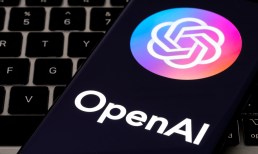True seismic shifts in payments occur over the course of years — not months. But, as Jim McCarthy, CEO of Thredd, told Karen Webster, the halfway point of 2024 offers a chance to take stock of where we’re headed with instant payments and tokenization and where — if experiences elsewhere around the globe are any indication — there might be some headwinds.
The FedNow ® Service, of course, is just a year out from its July 2023 launch, and claims 900 banks in its roster — admittedly, most of them are receive-only when it comes to instant payments. The Clearing House’s RTP network has been around since 2017 and recently noted that it had a $1 billion day in real-time transaction volume over its network. But if the goal is true ubiquity, McCarthy said, “things will take time.”
McCarthy himself said that of the accounts he holds personally across a half dozen financial institutions (FIs), only one of them features real-time options. For account-to-account money movement, he said, “it’s incredible.” However, for B2C and purchase transactions where there are no counterparties (i.e. the four-party model), that’s where there he expects problems. When chargebacks and disputes come into play, it’s hard to get one’s money back.
“No one wants the money leaving the bank too quickly,” he said, which explains why there are relatively fewer senders connected to FedNow than payments receivers. The U.K., he said, by holding FIs liable for up to 415,000 GBPs per transaction, has incentivized FIs to slow down their faster payments efforts.
Give it a decade and things will change markedly, McCarthy said. But in the meantime, he said, fraud is still top of mind for stakeholders eyeing faster payments.
For now, as 2024 gives way to 2025, “the thing to watch out for is the regulatory environment,” said McCarthy. The payment networks, he said, are navigating the continuous debate over interchange rates and a scuttled settlement with merchants. And, in getting back to first principles, the consumer experience (and consumer protections) will always be paramount.
Advertisement: Scroll to Continue
Taking the Long-Term View
McCarthy’s comments came as part of the wrap up of the “What’s Next in Payments” series taking the pulse of FedNow, and looking at new innovation disrupting our industry.
And taking the longer-term view of payments innovation, he said, consumer experiences, protection and a wide berth of use cases will be buoyed by tokenization. As proof positive of just how long it takes to go mainstream with a true payments pivot, consider the fact that tokenization’s roots stretch back a decade.
In McCarthy’s telling, “tokenization would not have happened without Apple Pay as the catalyst.” Without Apple, said McCarthy, big banks like J.P. Morgan and others would not have embraced tokenization. He likened the emergence of tokenization to Visa Direct and Mastercard Send, which have seen strong uptake in recent years. Those offerings were, in fact, borne from the Original Credit Transaction, where push-to-card mechanisms started in 2020.
Apple’s push into tokenization rested on the idea and practice of launching a mobile wallet that used a credential that was not derived from the primary account number (PAN). McCarthy noted that during his own time with Visa, “the idea of tokenization came first, but it also failed first.” The ambition to bring one-time PANs to multiple use cases was daunting to do at scale.
In support of Apple, he said, the payments networks worked from the principle that Apple could not tie its hardware devices to a financial credential that was at risk of being compromised, creating financial and brand risk.
“We kept iterating and iterating to get to that point collectively with some smart people,” he said.
Fast forward to today: tokens are, of course, used far beyond the confines of Apple — and far beyond the confines of digital wallets — as part of distributed commerce. As of June, Visa has issued 10 billion tokens over the course of 10 years, far outstripping Visa’s previous pace of 50 years to get to 3 billion (card) credentials out in the field.
The token has evolved, too. “It used to be locked onto the device,” said McCarthy, “but now it’s turned into not just the digital credential, but the programmable one.” The token can now take on different “characteristics,” depending on where and how it’s being used — as a credit, debit or buy now, pay later (BNPL) option.
“We’re just scratching the surface,” said McCarthy. The emergence of the computer chip offers a parallel, he said, as chips can be embedded just about anywhere. So too, now, can digital wallets and tokens, as payments are embedded in fleet vehicles that now “talk” to the pump or “talk” to the convenience store.
“You’re going to see a flood of companies that look at how and where they can play, ubiquitously, across all devices. You’re going to see more wallets, and you’re going to see more tokens.”



